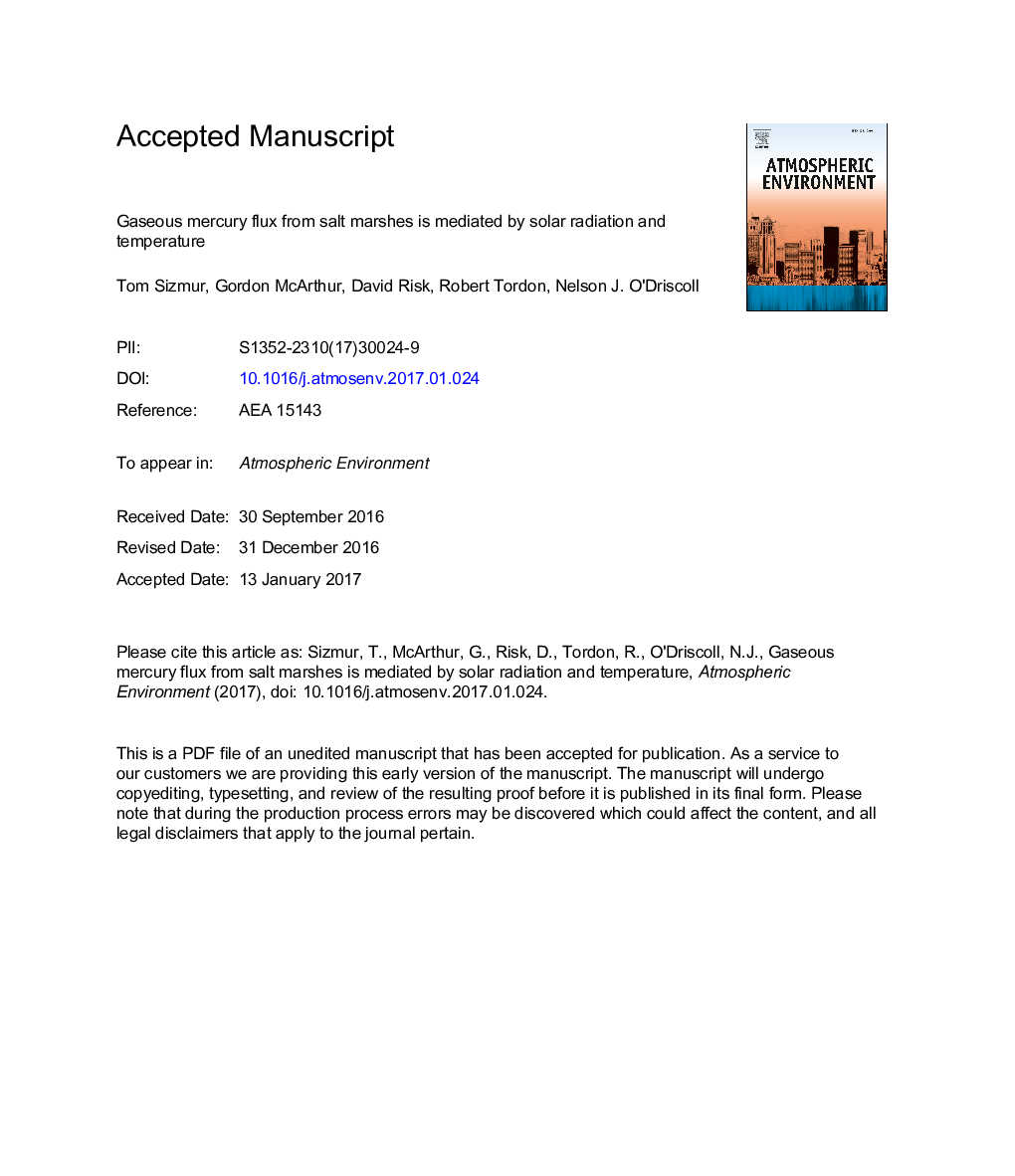| Article ID | Journal | Published Year | Pages | File Type |
|---|---|---|---|---|
| 5753010 | Atmospheric Environment | 2017 | 23 Pages |
Abstract
Salt marshes are ecologically sensitive ecosystems where mercury (Hg) methylation and biomagnification can occur. Understanding the mechanisms controlling gaseous Hg flux from salt marshes is important to predict the retention of Hg in coastal wetlands and project the impact of environmental change on the global Hg cycle. We monitored Hg flux from a remote salt marsh over 9 days which included three cloudless days and a 4Â mm rainfall event. We observed a cyclical diel relationship between Hg flux and solar radiation. When measurements at the same irradiance intensity are considered, Hg flux was greater in the evening when the sediment was warm than in the morning when the sediment was cool. This is evidence to suggest that both solar radiation and sediment temperature directly influence the rate of Hg(II) photoreduction in salt marshes. Hg flux could be predicted from solar radiation and sediment temperature in sub-datasets collected during cloudless days (R2Â =Â 0.99), and before (R2Â =Â 0.97) and after (R2Â =Â 0.95) the rainfall event, but the combined dataset could not account for the lower Hg flux after the rainfall event that is in contrast to greater Hg flux observed from soils after rainfall events.
Related Topics
Physical Sciences and Engineering
Earth and Planetary Sciences
Atmospheric Science
Authors
Tom Sizmur, Gordon McArthur, David Risk, Robert Tordon, Nelson J. O'Driscoll,
